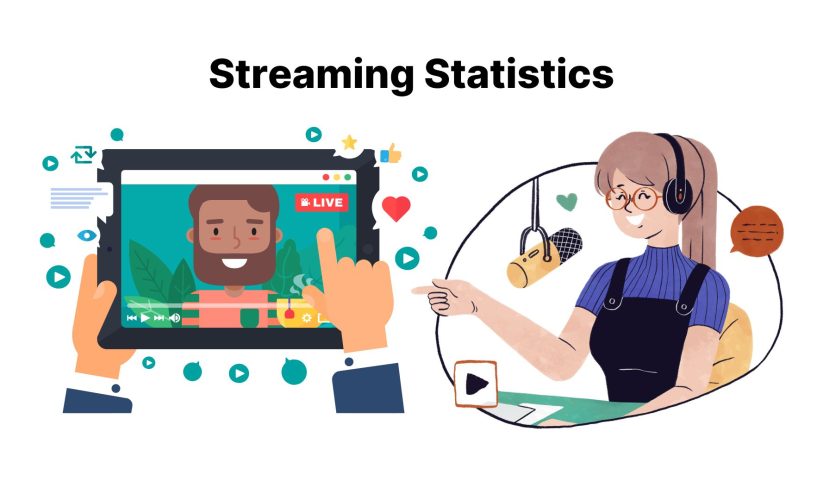
What Are Stream Stats and Why Do They Matter?
In the digital age, streaming content has become a dominant form of entertainment and communication. Whether you’re a musician, gamer, or content creator, understanding stream stats is essential for measuring success and optimizing your approach. But what exactly are stream stats, and why do they matter? This article will delve into the definition of stream stats, the key metrics involved, and their significance in the streaming landscape.
What Are Stream Stats?
Definition
Stream stats refer to a collection of metrics that provide insights into the performance of streamed content. These metrics can include a variety of data points, such as viewer counts, engagement rates, watch time, audience demographics, and more. By analyzing these stats, content creators can assess how their streams are performing and make informed decisions to improve their content.
Types of Stream Stats
- Viewer Count: This metric indicates the number of viewers watching your stream at any given time. It helps you gauge the popularity of your content.
- Watch Time: The total amount of time viewers spend watching your stream. This metric is crucial for understanding audience engagement.
- Audience Retention: This measures how long viewers stay engaged with your content. A higher retention rate indicates that your content is keeping viewers interested.
- Engagement Metrics: This includes likes, comments, shares, and interactions during the stream. These metrics provide insight into how actively your audience is participating.
- Demographics: Information about your audience, such as age, gender, and location. Understanding your audience demographics helps tailor content to their preferences.
- Click-Through Rate (CTR): This measures the percentage of viewers who take a specific action, such as clicking on a link or subscribing, after watching your stream.
Why Do Stream Stats Matter?
1. Measuring Success
Stream stats are essential for measuring the success of your content. By analyzing these metrics, you can determine whether your streams are meeting your goals, such as increasing viewer counts or enhancing engagement.
- Action Step: Set specific, measurable goals for your streams and use stream stats to track your progress. For example, if your goal is to increase watch time, focus on improving content quality to retain viewers longer.
2. Understanding Your Audience
One of the primary benefits of monitoring stream stats is gaining insights into your audience. Understanding who your viewers are, what they like, and how they engage with your content can help you tailor your streaming strategy.
- Importance: Knowing your audience demographics allows you to create content that resonates with them, ultimately leading to higher engagement and loyalty.
3. Optimizing Content
By analyzing stream stats, you can identify which types of content perform best. This allows you to refine your content strategy and focus on creating more of what your audience enjoys.
- Example: If your analytics show that certain topics or formats generate higher engagement, you can prioritize those in your future streams.
4. Improving Viewer Retention
Viewer retention is a critical metric that indicates how well your content keeps audiences engaged. By studying retention rates, you can identify points in your streams where viewers tend to drop off.
- Action Step: Use this information to improve your content. For example, if you notice that viewers leave during a specific segment, consider revising or removing it in future streams.
5. Informing Marketing Strategies
Stream stats can also inform your marketing efforts. By understanding when your audience is most active and what content resonates with them, you can tailor your promotional strategies for maximum impact.
- Tip: Analyze your engagement metrics to determine the best times to promote your streams on social media or other platforms.
6. Attracting Sponsorship Opportunities
For many content creators, attracting sponsorships is a vital aspect of monetization. Stream stats provide potential sponsors with the data they need to assess your channel’s reach and engagement.
- Importance: Having robust stream stats can make your channel more attractive to sponsors, as they want to partner with creators who have a strong and engaged audience.
7. Enhancing Community Engagement
Monitoring stream stats helps you engage with your community more effectively. By understanding what your viewers enjoy, you can create content that fosters a sense of belonging and connection.
- Action Step: Use engagement metrics to prompt discussions during your streams. Encourage viewers to share their thoughts and preferences, making them feel more involved.
8. Facilitating Continuous Improvement
The digital landscape is constantly evolving, and so should your content strategy. Regularly analyzing stream stats enables you to adapt to changing trends and viewer preferences.
- Tip: Stay informed about industry trends and incorporate new ideas into your streams based on data-driven insights.
Conclusion
In summary, stream stats are a crucial aspect of any content creator’s strategy. They provide valuable insights into audience behavior, engagement, and overall performance. By understanding and utilizing these metrics, you can measure success, optimize your content, and foster a more engaged community. Whether you’re a seasoned streamer or just starting, paying attention to your stream stats will help you stay ahead in the competitive world of digital content creation. Ultimately, stream stats are not just numbers; they are the keys to unlocking your potential and achieving your streaming goals.





